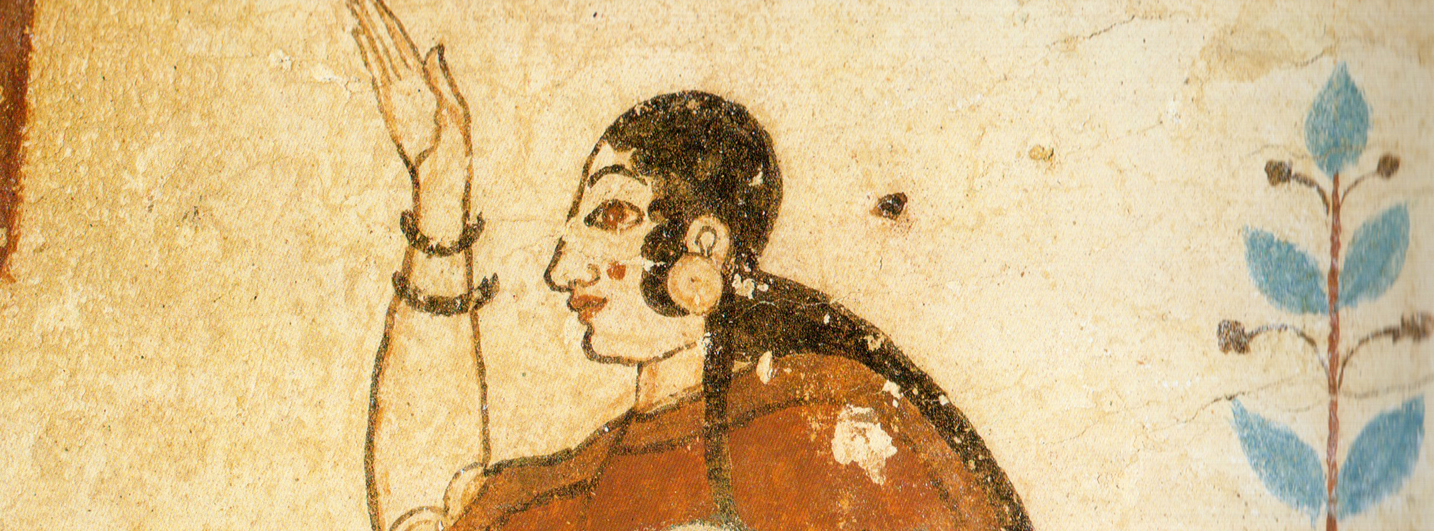
by Salvatore Piro
The earliest geophysical surveys in the Mediterranean area were carried out in the 1950s by the Lerici Foundation, which was established in 1947 at the Politecnico di Milano under the initiative of Carlo Maurilio Lerici (1890-1981), an engineer who changed the Centro di Prospezioni Geominerarie (that he himself created in 1939) into the Istituto di Geofisica Applicata. Soon after the Second World War, the Foundation set itself the objective of using geophysical methods in order to explore mineral, hydrocarbon, water and gas resources.
In 1954 Lerici inaugurated the section “Prospezioni Archeologiche”, an office of which was established in 1957 at the Istituto Italiano di Cultura in Stockholm and then, in 1970, in Rome. The section “Prospezioni Archeologiche”, which was charged with carrying out geophysical research on archaeological sites, attracted the interest of some of the most prestigious and specialised worldwide research centres, such as the University of Pennsylvania (Museum Applied Science Center for Archaeology – MASCA), the Oxford Archaeology Laboratory, the Centre for Geophysical Research of the CNRS at Garchy, and the Rheinisches Landesmuseum in Bonn.
From 1955 the Lerici Foundation ventured into the field of archaeology, gaining international renown thanks to impressive results on the detection of Etruscan tombs using the electrical resistivity method. Research activities were carried out in Etruria (Cerveteri, Vulci, Tarquinia, Pyrgi), Apulia (Passo di Corvo, Arpi), in Lucania (Metaponto, Eraclea, Siri), Calabria (Sibari), and also outside Italy.
Sensational discoveries, such as the “Tomba delle Olimpiadi” and the “Tomba dei Giocolieri” in the Monterozzi necropolis in Tarquinia, draw the attention both from scholars and the media. In his own book “Una vita meravigliosa nel mondo delle vibrazioni” (1975), Lerici dedicated a specific section to a large collection of photographs which show Italian and foreign State personalities, scholars and journalists visiting the archaeological excavations. The fame of the discoveries soon spread on the Radio and Television. Lerici also stood out in fighting the plague of grave robbers in Italy, as a way to saving the buried archaeological heritage.
In 1960, the Lerici Foundation undertook conductivity (EM) and resistivity surveys, followed by five seasons with two types of magnetometer (proton and caesium) measuring anomalies in the earth’s magnetic field intensity. The caesium magnetometer was later applied successfully by the MASCA to detect Neolithic sites in South Italy.
At Sybari, in 1961, following joint research with the Pennsylvania University, the team employed the proton magnetometers developed at Oxford University. Richard Edgar Linington (1936-1984), who was to become a key protagonist at the Lerici Foundation, took part in the magnetic survey team fostering widespread use of this method that had proved particularly useful in locating burial chambers cut in tuff in the Etruscan necropolises. Actually, the 1960s were a very important era, when archaeological applications of archaeological surveys were being recognized as a sub-discipline within geophysics. Linington played a very influential role in all aspects of archaeo-geophysics during this decade, and published papers covering both practical and theoretical issues in which the principal objective was data modelling and processing.
The use of differential proton magnetometer was also fostered thanks to the cooperation with the research unit of the Laboratory at the Rheinische Landesmuseum in Bonn, directed by Irwin Scollar. This scholar had already used a proton magnetometers of German make, featuring a resolution constituting 1/50000 part of magnetic field intensity, which in northern Europe gave a resolution close to 1 γ (gamma). Scollar also contributed significantly to computer data processing procedures and graphic presentation of results and, together with Linington, participated in the International Symposium on Mathematical and Computational Methods in the Social Sciences, organised in Rome in July 1966 by the International Computation Centre (ICC). They jointly presented a paper on “Data processing of geophysical measurements on archaeological sites”, stating that, by using the IBM 7090 installed in Bonn, data processing time was less than nine minutes per hectare.
The Foundation not only conducted field surveys, but actively participated in popularizing geophysics in its new role. From 1963 it organized annual archaeological prospection methodology courses (including geophysics) and in 1966 it established the journal «Prospezioni Archeologiche», with the aim of publishing fieldwork results as well as discussing theoretical aspects focusing on data modelling, processing and visualization. The Journal was inaugurated by the publication of the Proceedings of the “1st Symposium sui nuovi metodi di prospezione archeologica”, held in Rome in 1965.
If in the 1960s many articles on prospecting had graced the pages of «Archaeometry», in the 1970s the flow of material trickled down significantly. In part, that can be attributed to the changing interests of the burgeoning research group at Oxford but, more importantly, it reflects the impact of the newborn Journal. «Prospezioni Archeologiche», which was heavily influenced by R. Linington investigated the broad spectrum of applications that encapsulated geophysical surveying. A brief perusal of the indexes of the journal can help to identify all the major players as early as the embryonic period of the discipline: Aitken, Aspinall, Clark, Hesse, Linington, Scollar and Tite among others.
In 1970, on the occasion of Lerici’s eightieth birthday, Stockholm and Rome sections published a collection of Essays in his honour under the patronage of the King of Sweden and the President of the Italian Republic. After the death of its founder, in 1981, the Lerici Foundation continued to carry out geophysical surveys in all regions of Italy and abroad, thanks to cultural agreements with several foreign institutions, the interests of the Ministry of Foreign Affairs and the Italian National Research Council, and the cooperation with UNESCO.
VMAC – 2016